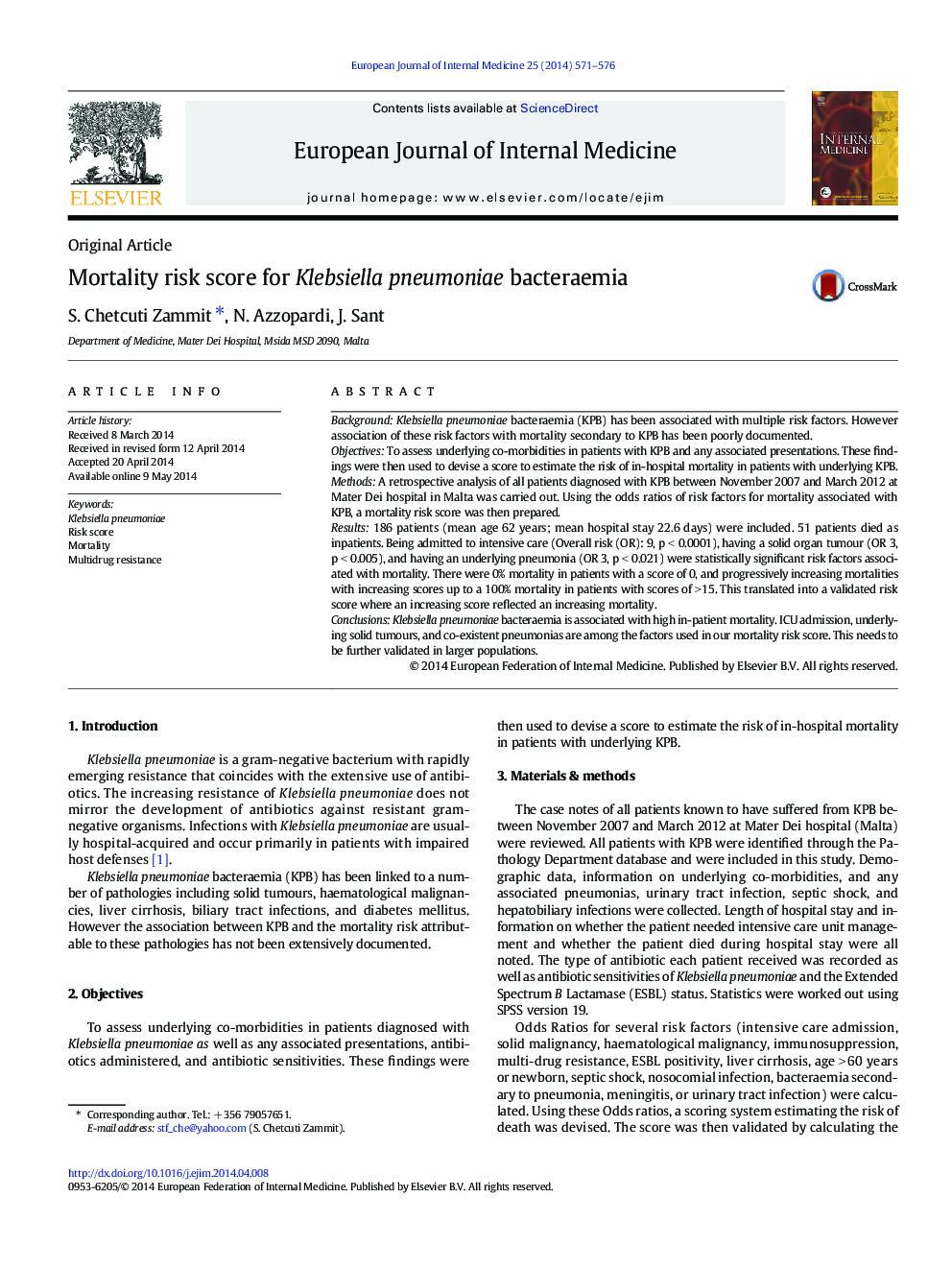| Article ID | Journal | Published Year | Pages | File Type |
|---|---|---|---|---|
| 3466523 | European Journal of Internal Medicine | 2014 | 6 Pages |
•We identified a high incidence of diabetes, haematological and solid organ tumours.•There is a high rate of septic shock, pneumonia and urinary tract infection.•We set up a mortality risk score and validated it by calculating survival.•ICU admission, solid organ tumour and pneumonia are risk factors for mortality.•A higher mortality score also predicts a longer hospital stay.
BackgroundKlebsiella pneumoniae bacteraemia (KPB) has been associated with multiple risk factors. However association of these risk factors with mortality secondary to KPB has been poorly documented.ObjectivesTo assess underlying co-morbidities in patients with KPB and any associated presentations. These findings were then used to devise a score to estimate the risk of in-hospital mortality in patients with underlying KPB.MethodsA retrospective analysis of all patients diagnosed with KPB between November 2007 and March 2012 at Mater Dei hospital in Malta was carried out. Using the odds ratios of risk factors for mortality associated with KPB, a mortality risk score was then prepared.Results186 patients (mean age 62 years; mean hospital stay 22.6 days) were included. 51 patients died as inpatients. Being admitted to intensive care (Overall risk (OR): 9, p < 0.0001), having a solid organ tumour (OR 3, p < 0.005), and having an underlying pneumonia (OR 3, p < 0.021) were statistically significant risk factors associated with mortality. There were 0% mortality in patients with a score of 0, and progressively increasing mortalities with increasing scores up to a 100% mortality in patients with scores of > 15. This translated into a validated risk score where an increasing score reflected an increasing mortality.ConclusionsKlebsiella pneumoniae bacteraemia is associated with high in-patient mortality. ICU admission, underlying solid tumours, and co-existent pneumonias are among the factors used in our mortality risk score. This needs to be further validated in larger populations.
Graphical abstractFigure optionsDownload full-size imageDownload high-quality image (153 K)Download as PowerPoint slide
